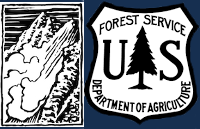Snowpack and Avalanche Discussion
<p><span><span><span><span><span><span>Snow totals from the weekend storm range from 24-46 inches of snow containing 2.3-4.8 inches of water. Many slopes have a deep, </span></span></span></span></span></span><a href="https://www.mtavalanche.com/node/34679"><span><span><span><span><span><… snowpack and good stability</span></span></u></span></span></span></span></span></a><span><span><span><span><span><span>, BUT not all. There are two main avalanche problems, one is easy to avoid while the other is more tricky. </span></span></span></span></span></span></p>
<p><span><span><span><strong><span><span>Heavy snowfall and ferocious winds formed large wind slabs </span></span></strong></span></span></span><span><span><span><span><span><span>last weekend and early this week</span></span></span></span></span></span><span><span><span><strong><span><span>. </span></span></strong></span></span></span><span><span><span><span><span><span>While these wind slabs may have stabilized some the last two days, more wind and snow will load the same slopes today keeping them on edge. </span></span></span></span></span></span><span><span><span><strong><span><span>These wind slabs can be quite large</span></span></strong></span></span></span><span><span><span><span><span><span> and mostly an issue at upper elevations above treeline. Several great examples of this problem were avalanches spotted yesterday north of Cooke City </span></span></span></span></span></span><a href="https://www.mtavalanche.com/node/34685"><span><span><span><span><span><… Wolverine Peak and Scotch Bonnet</span></span></u></span></span></span></span></span></a><span><span><span><span><span><span> and </span></span></span></span></span></span><a href="https://www.mtavalanche.com/node/34690"><span><span><span><span><span><… Goose Lake</span></span></u></span></span></span></span></span></a><span><span><span><span><span><span>.</span></span></span></span></span></span></p>
<p><span><span><span><span><span><span>The load of such </span></span></span></span></span></span><span><span><span><strong><span><span>heavy snowfall has also awakened a persistent slab avalanche problem</span></span></strong></span></span></span><span><span><span><span><span><span>, but this one is </span></span></span></span></span></span><span><span><span><strong><span><span>really tricky</span></span></strong></span></span></span><span><span><span><span><span><span>. Slopes with a relatively thinner snowpack still harbor weak, faceted snow and can produce avalanches like </span></span></span></span></span></span><a href="https://www.mtavalanche.com/node/34684"><span><span><span><span><span><… in Sunlight Basin</span></span></u></span></span></span></span></span></a><span><span><span><span><span><span> in the southern Madison Range yesterday. Some areas may have a thinner snowpack overall and will be easy to identify by digging a snowpit. Other areas will have isolated slopes with a thinner snowpack because they either previously avalanched or were scoured by winds at another time.</span></span></span></span></span></span></p>
<p><span><span><span><span><span><span>Today wind loaded slopes (loaded last weekend and being loaded again today) have a CONSIDERABLE avalanche danger. Slopes not loaded by winds have a MODERATE danger, but this is tricky. Riding slopes less than 30 degrees in steepness that aren’t steep enough to slide is always a great option.</span></span></span></span></span></span></p>
<p><span><span><span><span><span><span>The mountains near Bozeman and Big Sky have a strong deep snowpack, and the single avalanche problem is </span></span></span></span></span></span><span><span><span><strong><span><span>wind slab avalanches</span></span></strong></span></span></span><span><span><span><span><span><span>. Ski patrols triggered wind slabs 6-12 inches deep yesterday. While skiing at Bridger Bowl yesterday, I thought I could see several small wind </span></span></span></span></span></span><a href="https://www.mtavalanche.com/node/34696"><span><span><span><span><span><… triggered on Saddle Peak</span></span></u></span></span></span></span></span></a><span><span><span><span><span><span>, one at the top and one maybe halfway down.</span></span></span></span></span></span></p>
<p><span><span><span><strong><span><span>Winds increased again this morning</span></span></strong></span></span></span><span><span><span><span><span><span> from the W and SW. They should be moving more snow today, building new wind slabs and keeping older ones on edge. As Ian found </span></span></span></span></span></span><a href="https://www.mtavalanche.com/node/34666"><span><span><span><span><span><… the Throne in the Bridgers on Tuesday</span></span></u></span></span></span></span></span></a><span><span><span><span><span><span>, the simplest option for good skiing and riding as well as good stability is to </span></span></span></span></span></span><span><span><span><strong><span><span>ride slopes sheltered from the wind</span></span></strong></span></span></span><span><span><span><span><span><span>. </span></span></span></span></span></span></p>
<p><span><span><span><span><span><span>Today with a little bit of snow falling and strong winds blowing, the avalanche danger will be CONSIDERABLE on wind loaded slopes. Getting out of the wind will be a challenge, but slopes sheltered from the wind with no wind deposited snow will have good stability and a LOW danger.</span></span></span></span></span></span></p>
